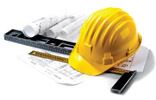Architectural Engineering and Construction, Durham School of

Durham School of Architectural Engineering and Construction: Faculty Publications
Document Type
Article
Date of this Version
8-8-2023
Citation
Building and Environment 244 (2023) 110720
Abstract
In the past decade, the term ‘global aging’ has gained much attention among researchers, policymakers, civil societies, and governments worldwide. The continuous decline in fertility rates and increased life expectancy have resulted in an ongoing demographic transition where the share of adults aged 65 or older is increasing and outnumbering children younger than five years. In the United States and other developed countries, this rapid demographic transition is expected to continue to strain the existing health infrastructure as it becomes increasingly challenging to ensure healthy living environments for older adults. The ten questions and answers in this paper have been prepared by experts from gerontology, geriatrics, architectural engineering, and senior living operations to inform and characterize the current continuum of living environments and communities available to older adults. They also identify the common elements that influence the environmental needs of older adults and highlight factors (such as technical assistance, health equity gaps, and caregiver workforce development) that challenge the future of smart and healthy built environments for older adults. A special focus has been placed on contextualizing indoor environmental quality (IEQ) elements and smart building technologies for older individuals, caregivers, and their various requirements (perhaps in their own homes and communities). Together, these viewpoints create a new paradigm to assist in designing and managing intelligent, healthy built environments that respond to human demands. Although this paper focuses on factors in the United States, others can benefit from the framework incubated upon these experiences, making this effort relevant toward addressing global opportunities in environments for older adults.
Included in
Architectural Engineering Commons, Construction Engineering Commons, Environmental Design Commons, Other Engineering Commons


Comments
Open access.